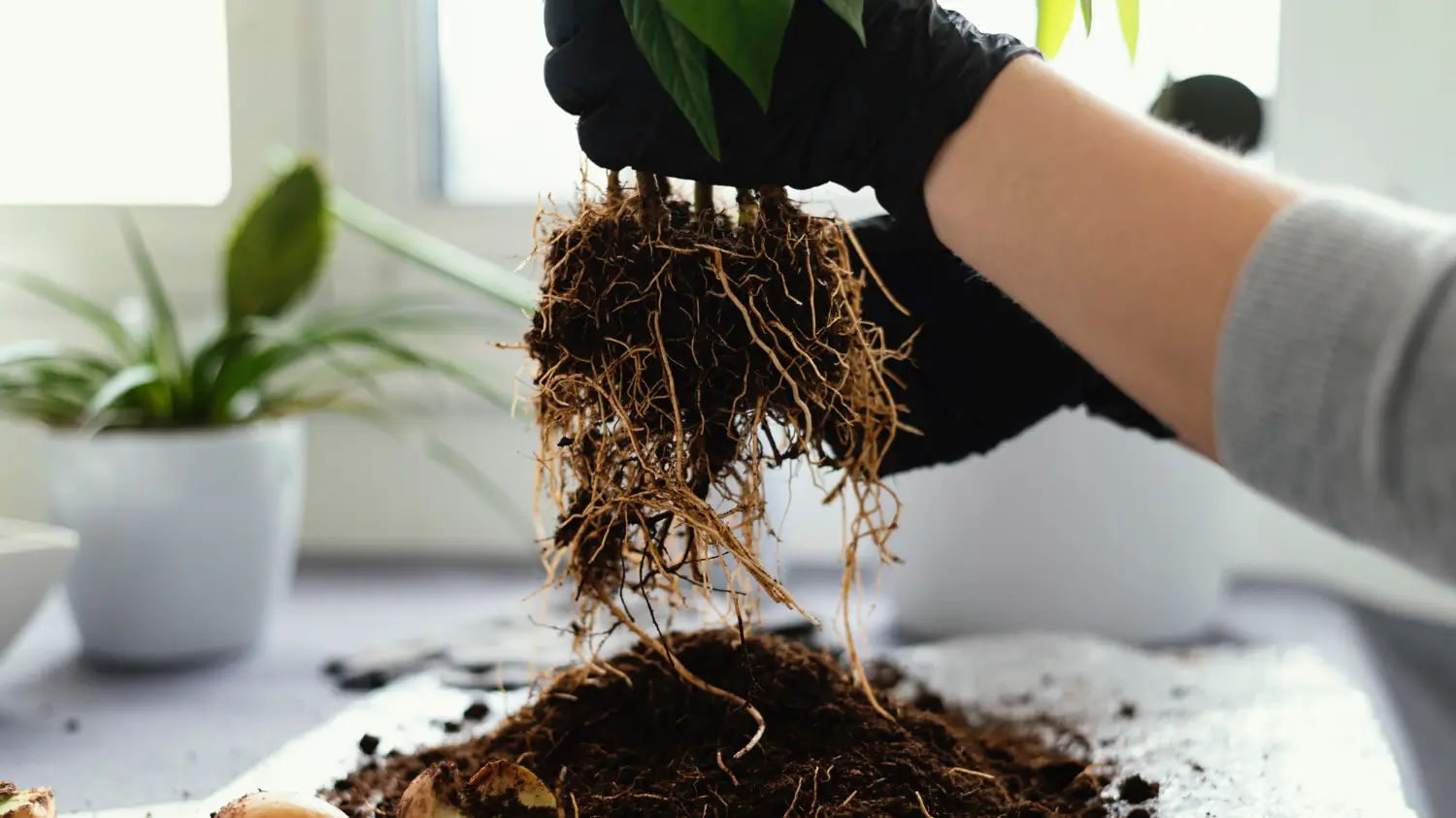
August 24, 2025

Propagation is a cost effective way to grow new plants and is utilized by over 80% of professional commercial plant growers. Whether a home gardener is attempting to root another tomato plant from a favorite variety or a commercial nursery is propagating thousands of plants for decorative use, propagation is an integral component of gardening and the production of plants.
Propagation refers to growing new plants from seeds, cuttings, or other parts of the plant. But that approach can be tricky. There’s nothing more disappointing than taking a healthy cutting, planting it and nurturing it only to watch it wilt or struggle to grow roots. Timing, moisture and plant health all play a role, but one simple factor that can enhance the results is rooting hormones.
Rooting hormones are more common lately. Growcycle sells gardening supplies, including different rooting hormones (powder, gel, liquid) for plant propagation.
Growing new plants from seeds, cuttings, or other sections of the plant is known as propagation. It is widely used by gardeners, farmers and plant nurseries to propagate more plants without having to start from scratch every single time.
There are four main types of propagation methods:
There are plenty of benefits of propagation:
Propagation is rewarding, but it does have its set of challenges:
Rooting hormones are agents that make it easier for plant cuttings to develop roots. These hormones mimic or reinforce the plant’s natural signals that inform it where and when to grow roots. Gardeners and growers use them in order to increase the success of propagating plants, particularly for stem or leaf cuttings.
Auxin is the principal natural hormone that modulates root growth. Auxins are plant hormones that regulate growth. They naturally occur at the tips of stems and roots and are important in promoting new roots to grow from cuttings.
When taking a cutting from a plant, it loses access to some of the natural auxins that keep it growing. Applying a rooting hormone either replaces or enhances those signals, informing the plant that it’s time to make new roots. The process is known as root induction.
Rooting hormones are available in two main types of auxins:
There are two main types of rooting hormones:
1. Synthetic Hormones
Synthetic auxins are often used as a commercial rooting hormone because they are stable, easy to use, and have been shown to be effective. There are two most popular synthetic rooting hormones:
Synthetic rooting hormones are most often available in powder, gel, or liquid form. They are well known to nurseries, greenhouses, and home gardeners seeking consistent results.
2. Natural Alternatives
Other gardeners rely on natural rooting hormone alternatives, particularly in organic gardening. These include:
Rooting hormones are essential for ensuring that plant cuttings take root faster and with greater vitality. Without a good root system they may have difficulty drawing up water and nutrients, which can result in poor growth or, (in the worst case), plant death. This is where rooting hormones really step up.
When a plant is cut, it undergoes stress. It has been cut off from the full support system of the original plant. Rooting hormones ease that stress by sending signals that prompt root cells to grow more quickly. This speeds up the whole rooting process and gives the cutting a better chance of survival.
There are several very important benefits derived from using rooting hormones:
The proper use of rooting hormones can make a huge difference in the growth of plant cuttings.
Before applying rooting hormones, it’s important to get everything ready:
Powder rooting hormones are dry and can be easily stored. Here’s how to use them:
Tip: Always wear gloves or wash hands after touching powders.
Liquid rooting hormones are potent and generally must be diluted. Here’s how to use them:
Tip: Save the unused, already-diluted liquid in a cool, dark place if want to save it for later, but not for too long, because it can lose strength.
The gel rooting hormones are simple to use and adhere well to the cutting.
Tip: Gels protect from bacteria and help the cutting to rehydrate and absorb the hormone over days to weeks.
After the cutting is planted, proper care is critical for the formation of roots:
The right rooting hormone can increase the chance of success and aid cuttings to develop faster and more stronger when propagating plants. Growcycle has several rooting hormone products on offer that provide quality nutrition for gardeners and professional growers. Here’s a look at some of the top options out there:
OHP Hormodin #2 is a trusted rooting hormone powder with an effective active ingredient IBA (Indole-3-butyric acid) at 0.3% that promotes root growth. It’s great for a wide range of plants, particularly ones that are more challenging to propagate.
Best For: Woody and semi-woody plants, including evergreens.
PHT Hortus IBA WSS 20% Rooting Hormone is an extremely efficient water-soluble 20% IBA salts rooting hormone. This is great for big operations as it removes the need to dip each cutting individually. Since it can be mixed with water and applied to the propagation bed, it is efficient and cheap and allows fertilization on a larger scale and for commercial nurseries.
Best For: Large-scale propagation and professional nurseries.
Dip-n-Grow is a liquid concentrate that can be diluted to use on almost any plant. This widely used formula is used by both amateur and professional botanists as it is successful across many species of herbs, flowers and even woody plants. Just dilute the concentrate, then dip the cuttings into the solution for quicker, healthier rooting.
Best For: Versatile use on a variety of plants.
Fine Advocate Rooting Hormone is a liquid preparation with IBA based, which encourages root systems on many plants. Lauded for its superior formulation, it can be especially helpful when people want to ensure the plants develop healthy root structures. It’s perfect for both professionals and dedicated hobbyists looking to make the most of propagation success.
Best For: High-quality propagation for diverse plant types.
Rooting hormones can help improve plant propagation, but there are other factors involved in growing a plant that will help improve the results.
The right environment is necessary to make rooting hormones effective. Every factor has to be meticulously controlled.
Propagation is an ongoing activity that needs continued monitoring. Keep an eye on the cuttings to stay successful and adjust when necessary.
Which hormone is used for early rooting in propagation?
The hormone most frequently employed for early rooting is IBA (Indole-3-butyric acid), which is present in many rooting hormone products, including Hormodin #2 and Dip-n-Grow.
Does a rooting hormone make plants grow faster?
It does not directly make the plant grow faster, but it speeds up the root development process, allowing the plant to establish itself more quickly and in turn, grow faster once it is rooted.
Which auxin is best for rooting?
In many respects, IBA (Indole-3-butyric acid) is considered the preeminent auxin for stimulating rooting of cuttings, particularly for woody and semi-woody species.
Rooting hormones are key to successful propagation. Used for home gardeners as well as large plant nurseries, they help plants develop roots faster and healthier. Rooting hormones enhance the plant’s natural growth signals, making it easier and faster for cuttings to grow roots. Visit Growcycle to discover high-quality rooting hormone products such as powders, gels, and liquids for gardeners to find an option that best suits their needs.
Disclaimer: This material is for informational purposes only and should not be relied on for legal, medical, financial, or any other form of professional advice.